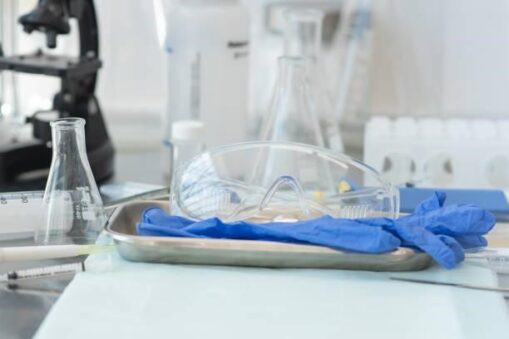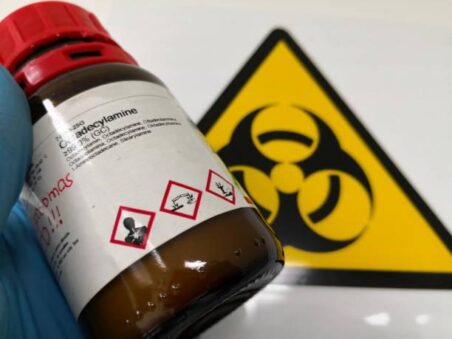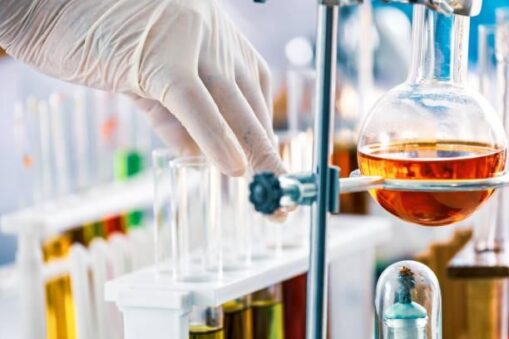- Your cart is empty
- Continue Shopping
Top 12 Safety Tips Every Lab Must Follow
- Lab Equipment
- Posted on
-
by John
- 0 comments

To minimize lab disasters, it’s critical to have a solid set of general laboratory safety guidelines. Of course, safety rules are only effective if they are followed, so competent lab management is essential for a safe laboratory. It’s also crucial to understand the proper laboratory safety signs and symbols. The science lab is inherently dangerous with fire hazards, chemicals, and risky processes. Accidents in labs may prove to be fatal; therefore, following lab safety standards is essential.
Here are some laboratory safety tips:
The Most Crucial Laboratory Safety Rule: Stick to the directions!
It’s vital to listen, pay attention, and be familiar with all of the stages, from start to finish, before you begin, whether you’re listening to your instructor or lab supervisor or following a process in a book. If you’re unsure about something or have questions, have them answered before you start, even if it concerns a later phase in the protocol. Before you begin, make sure you understand how to utilize all lab equipment. If you are not following safety rules, the following things might happen:
● You put yourself and others in danger in the lab.
● Your experiment could be ruined.
● You put the lab in danger of an accident, which might harm personnel and damage equipment.
● If you’re a student, you may be suspended, and if you’re a researcher, you could be dismissed.
What to Wear to the Lab?

Prepare yourself for the lab. This is a safety rule because your clothing is one of the most crucial kinds of protection against an accident. Wear covered shoes and long pants, and keep your hair up so it doesn’t meddle in your experiment or catch fire. If necessary, wear protective equipment. A lab coat and safety goggles are required. Depending on the nature of the experiment, you may additionally need gloves, hearing protection, and other equipment.
Avoid Self-Experimentation:
Many science fiction films begin with a scientist experimenting on themselves. However, you will not get superpowers or learn the key to endless youth. Whatever you do will almost certainly put your life in jeopardy.
Do not eat or drink:
Keep your eating to the workplace and away from the lab. In the science lab, you must not eat or drink. Food and beverages should not be kept in the same refrigerator as experiments, chemicals, or cultures.
There is far too much possibility of food contamination. You could touch it with a hand covered in chemicals or pathogens or place it on a lab bench covered in residue from previous experiments.
Drinking in the lab puts your experiment at risk. You may spill anything on your research or lab notebook. You can’t concentrate on your task if you’re eating.
You might drink the wrong beverage if you’re used to sipping liquids in the lab. This is especially relevant if your glassware was not labeled or if you utilize lab glassware as dishes.
Know Where Your Safety Equipment Is:
It’s critical to know where the safety equipment is and how to utilize it if something goes wrong. It’s a good idea to examine the equipment regularly to ensure it’s in good operating order. For example, Does water flow out of the safety shower? Does the eye wash’s water appear to be clean?
Chemicals should not be tasted or sniffed:

You should not only avoid bringing food or drinks into the lab, but you should also avoid tasting or smelling chemicals or biological cultures already there. Some substances are harmful or even deadly to taste or smell. Labeling a container is the most excellent method to know what’s inside, so make a habit of labeling glassware before adding the chemical.
Behave Appropriately In the Laboratory:
Another critical safety rule is to behave appropriately in the lab, rather than combining chemicals at random to see what occurs. An explosion, fire, or poisonous gas leak could occur as a result. Creating indiscipline is also not permitted in the laboratory. You risk breaking glassware, causing annoyance to others, and possibly causing an accident.
Know How to Handle Lab Mistakes:
Accidents happen, but you can try to avoid them and have a plan in place for when they do. In case of an accident, most laboratories have a strategy in place. One of the most critical safety rules is to notify a supervisor if and when an accident occurs. Don’t try to hide it or lie about it. There could be consequences if you get cut, are exposed to a chemical, are bitten by a lab animal, or spill something, and the danger isn’t limited to you. If you don’t seek medical help, you risk exposing others to toxins or pathogens. You might also endange your lab if you don’t admit to an accident.
Properly dispose of lab waste:
Knowing what to do with your experiment once it’s finished is a crucial laboratory safety rule. You should know what you’ll do at the end of an experiment before you begin. It is ethically wrong to expect from next person to clean up after you.
- Is it OK to flush the chemicals down the toilet? If not, what are your plans for them?
- Is it OK to clean biological cultures using soap and water, or do you require an autoclave to destroy dangerous organisms?
- Do you have any needles or shattered glass? Know how to dispose of sharp objects properly.
Experiments should be left in the lab:
You must leave your experiment at the lab for your own and others’ safety. Don’t bring it back with you. You might spill something, misplace a specimen, or have an accident. This is how most science fiction films begin. You can harm someone, start a fire, or lose your lab privileges in real life.
Handle lab equipment with caution:

Mishandling laboratory equipment, in addition to chemicals, can result in accidents. Avoid using razor blades, unplug hot plates, and turn off Bunsen burners. Please do not touch any frayed or damaged electrical cords and report them to the appropriate authorities as soon as possible. Handle shattered glassware with care; instead of picking up the pieces with your hands, use a broom and dustpan. After each use, remember to return all equipment to its proper location.
In the event of an accident, do not panic:
Accidents do happen, even when measures are taken. Don’t freak out if you’re in an accident. Panic can make things worse. Avoid tripping over wires or knocking down chemical bottles. It’s critical to know where the lab safety equipment like a fire extinguisher, first aid pack, emergency phone, and eyewash station are. If you get chemicals or particles in your eyes or skin, wash them out. Take lab safety drills seriously; participating in them regularly can better prepare you for real-life crises. Finally, inform your supervisor about the experiment and carefully follow their directions.
Conclusion:
The collection of lab safety regulations outlined above can assist you in avoiding mishaps. The guidelines, however, are only successful if everyone in the lab follows them. As a result, we recommend that you review your lab’s safety rules every now and then.
